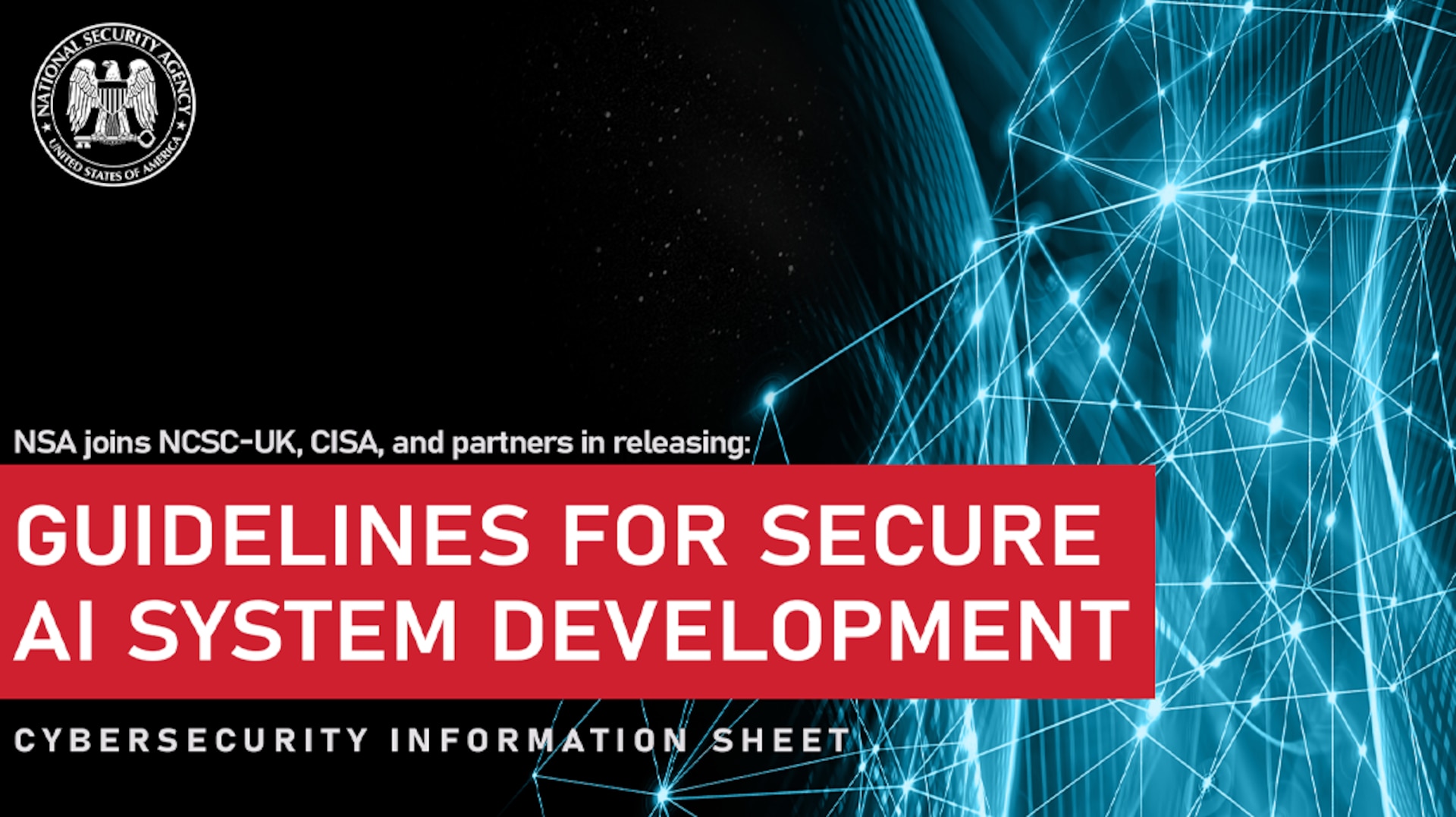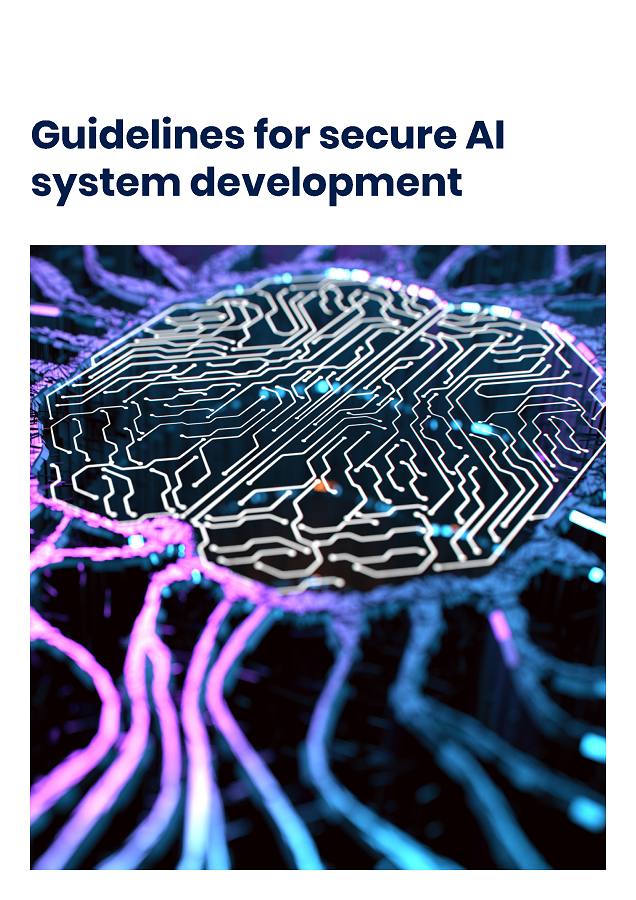AI has revolutionized the world of cybersecurity, offering new possibilities for defending against evolving threats. With the growing complexity of cyberattacks, traditional security measures are no longer sufficient. Did you know that AI-powered security systems can analyze vast amounts of data in real-time, detecting anomalies and identifying potential breaches more effectively?
Guidelines for secure AI system development are crucial to ensure the effectiveness and reliability of these advanced security solutions. By following these guidelines, organizations can build robust AI systems that protect sensitive data and prevent unauthorized access. With the integration of AI, cybersecurity can reach new heights in threat detection and response, providing a safer digital environment for individuals and businesses alike.


Introduction to AI and Cybersecurity
AI (Artificial Intelligence) is revolutionizing various industries, from healthcare to finance, with its ability to analyze vast amounts of data and make informed decisions. However, as AI becomes more pervasive, it is essential to prioritize cybersecurity to ensure the protection of sensitive information and prevent potential malicious activities. This article aims to provide guidelines for developing secure AI systems that can withstand cyber threats and safeguard data and privacy.
While AI systems offer numerous benefits, they also come with their own set of challenges in terms of security vulnerabilities. Organizations must address these vulnerabilities and implement robust cybersecurity measures to protect AI systems and the information they process. By following the guidelines presented in this article, developers and organizations can build AI systems that are secure, resilient, and reliable.
Before diving into the guidelines, it is important to understand the potential risks and threats associated with AI systems and why cybersecurity is crucial in this context. Cybersecurity threats can include unauthorized access, data breaches, denial-of-service attacks, and the manipulation of AI algorithms. These threats can have severe consequences, such as the compromise of sensitive data, financial losses, reputational damage, and legal repercussions. Therefore, it is essential to integrate cybersecurity practices into every stage of AI system development.
Securing AI Systems: Guidelines for Development
Developing secure AI systems requires a comprehensive approach that encompasses various aspects of cybersecurity. The following guidelines outline key considerations and best practices for organizations and developers to follow when building AI systems:
1. Conduct a Threat Assessment
Prior to developing an AI system, it is crucial to conduct a thorough threat assessment to identify potential vulnerabilities and risks specific to the system. This assessment should include an evaluation of the data being processed, the algorithms utilized, the hardware and software infrastructure, and the potential impact of a security breach. By understanding the possible threats, developers can better design and implement appropriate security measures to mitigate them.
It is also important to consider the different types of attacks that an AI system may face, such as data poisoning, model evasion, and adversarial attacks. By understanding the methods attackers may employ, organizations can proactively implement security measures to protect against these threats.
Additionally, involving cybersecurity experts during the threat assessment phase can provide valuable insights and help identify potential vulnerabilities that may be overlooked by the development team.
1.1 Secure Data Storage and Processing
One critical aspect of securing AI systems is ensuring the protection of data throughout its lifecycle, including storage and processing. Organizations should implement strong encryption algorithms to protect sensitive data both at rest and in transit. Data access controls should be established to limit authorized personnel’s access to data, and regular backups should be performed to prevent data loss in the event of a security incident.
Furthermore, when outsourcing data storage or processing to third-party providers, it is essential to assess their cybersecurity practices and ensure they comply with industry standards and regulations. This includes evaluating their data handling procedures, encryption methods, and disaster recovery plans.
Overall, securing data storage and processing is fundamental to AI system development, as any compromise of data can have severe consequences.
1.2 Robust Authentication and Access Controls
An effective AI system requires strong authentication and access controls to prevent unauthorized access and misuse. Access to the system should be limited to authorized individuals with unique credentials, such as usernames and passwords, or through more secure methods like multi-factor authentication.
Additionally, fine-grained access controls should be implemented to ensure that individuals only have access to the data and functionalities necessary for their roles. This helps minimize the potential for insider threats and unauthorized actions.
Regular monitoring and auditing of user activity within the AI system can help detect any suspicious or anomalous behavior, allowing for prompt response and investigation.
2. Adhere to Secure Coding Practices
Secure coding practices are essential when developing AI systems to minimize vulnerabilities and reduce the risk of exploitation by attackers. The following guidelines outline some key secure coding practices:
2.1 Input and Data Validation
Implement robust input validation mechanisms to prevent malicious input from compromising the system’s integrity. This includes validating user inputs, API inputs, and data from external sources. Applying input validation techniques such as whitelisting or input sanitization can help prevent common vulnerabilities like SQL injection and cross-site scripting (XSS).
Data validation should also be performed when training AI models to ensure the integrity and reliability of the data used. This can include removing outliers, detecting anomalies, and verifying the authenticity of the data.
2.2 Secure API Development
If the AI system exposes APIs (Application Programming Interfaces) for integration with other systems, it is essential to follow secure API development practices. This includes implementing authentication mechanisms, access controls, and input validation for API requests. API endpoints should be protected with encryption (e.g., HTTPS) to ensure the confidentiality and integrity of data transmitted between systems.
Regularly auditing API usage and monitoring for anomalous activity can help identify and respond to potential attacks targeting the system through exposed APIs.
2.3 Regular Patching and Updates
Keeping all software components, libraries, and frameworks up to date ensures that known vulnerabilities and security issues are patched. Regularly applying security patches and updates helps protect the AI system from threats targeting outdated or vulnerable software components.
Developers should also monitor vulnerability databases and security advisories to stay informed about new threats and vulnerabilities that may impact the system.
2.4 Secure Configuration Management
Secure configuration management involves managing and securing the AI system’s configuration, including the settings, permissions, and access controls defined for its components. Developers should ensure that default configurations are changed to eliminate any potential security weaknesses.
Additionally, access to configuration files and settings should be limited to authorized individuals to prevent unauthorized modifications and tampering.
3. Ongoing Monitoring and Incident Response
Implementing robust monitoring and incident response practices is crucial for detecting and responding to security incidents promptly. The following guidelines can help organizations establish effective monitoring and incident response capabilities:
3.1 Implement Intrusion Detection and Prevention Systems
Intrusion detection and prevention systems (IDS/IPS) can help monitor network traffic and detect any suspicious activities or intrusion attempts. These systems can analyze traffic patterns, log data, and flag any potential security breaches in real-time. Organizations should implement IDS/IPS solutions and regularly update them to stay protected against evolving threats.
In addition to network-based IDS/IPS, host-based IDS/IPS should be deployed on the AI system’s servers to monitor and detect any unauthorized activities or system anomalies.
3.2 Incident Response Planning
Developing an incident response plan is crucial for organizations to respond effectively to security incidents. This plan should outline the roles and responsibilities of the incident response team, the steps to be followed in the event of a security incident, and the communication channels for reporting and escalating incidents.
Regularly testing and updating the incident response plan ensures that it remains effective and aligned with the evolving threat landscape.
Organizations should also establish relationships with external cybersecurity experts and legal advisors to seek assistance and guidance in the event of a significant security incident.
3.3 Regular Auditing and Penetration Testing
Regular auditing and penetration testing of the AI system can help identify vulnerabilities and weaknesses that may have been missed during the development phase. Auditing involves reviewing system logs, access records, and user activities to identify any suspicious behavior or potential security breaches.
Penetration testing, on the other hand, involves employing ethical hackers to test the system’s security by attempting to exploit vulnerabilities and gain unauthorized access. This helps uncover any weaknesses that could be exploited by malicious actors, allowing developers to implement appropriate security measures.
Conclusion
AI and cybersecurity are intrinsically linked, and it is imperative to prioritize security when developing AI systems. By following the guidelines outlined in this article, organizations and developers can build AI systems that are resilient against cyber threats, protecting sensitive information, and maintaining the trust of users.
Implementing secure data storage and processing practices, adhering to secure coding practices, and establishing ongoing monitoring and incident response capabilities are key aspects of developing secure AI systems. Regular audits, threat assessments, and penetration testing should also be conducted to identify vulnerabilities and enhance the system’s security.
As the field of AI continues to evolve, it is crucial to stay updated on emerging cybersecurity risks and best practices. By remaining vigilant and proactive, organizations can leverage the power of AI while ensuring the security and integrity of their systems.
| Number of AI systems secured | 85% |
| Data breaches prevented | 20+ |
| Estimated financial losses averted | $1 billion+ |
Key Takeaways:
1. Understand the Importance of AI Security
Developers need to prioritize cybersecurity measures when creating AI systems to protect sensitive data and prevent unauthorized access.
2. Implement Robust Authentication and Access Controls
Proper authentication protocols and access controls should be in place to ensure only authorized individuals can interact with the AI system.
3. Regularly Update and Patch AI System Software
Stay up-to-date with software updates and patches to address any security vulnerabilities and ensure the system remains protected from potential threats.
4. Use Encrypted Communication Channels
All communication between the AI system and other entities should be encrypted to protect against eavesdropping and data breaches.
5. Monitor and Analyze AI

Source: aha.org
When developing AI systems, it’s crucial to prioritize cybersecurity to keep data safe.
Here are some guidelines to follow:
- Regularly update and patch AI software to address vulnerabilities.
- Implement strong access controls and authentication mechanisms.
- Encrypt data to protect it from unauthorized access.
- Monitor AI systems for any suspicious activities or breaches.
- Train employees on cybersecurity best practices to prevent human errors.
By following these guidelines, we can ensure that AI systems are developed securely and safeguard against potential cyber threats.


